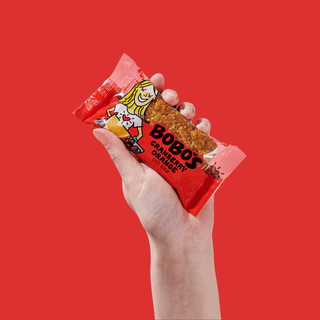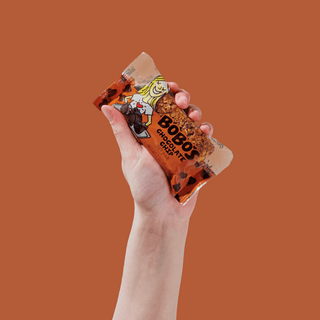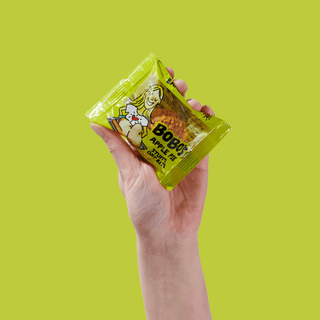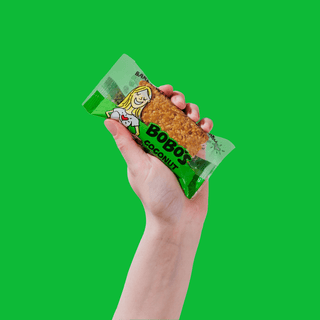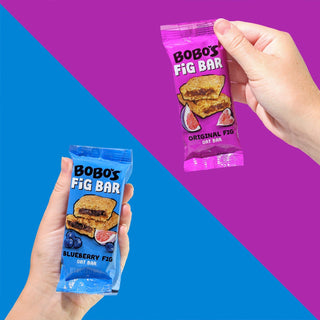Grab These Gluten Free Groceries on Your Next Shopping Trip
If you're just starting out with gluten free shopping - maybe you or a family member have a new sensitivity or allergy - it can feel pretty overwhelming to navigate store aisles and know what's good or not or, most importantly, what's safe to consume. That's where this guide to gluten free groceries will come in super handy the next time you venture out for necessities.
What groceries are gluten free?
You may think you know which groceries are free of gluten, but this can be deceiving at first glance. The next time you're in the grocery aisle, take this handy gluten free grocery list along with you as your guide to which groceries are gluten free.
Your gluten free shopping list
Grains
Whole grains, which include bread, rice, pasta, and crackers, are a good source of healthy carbohydrates that give you energy and are important to a healthy diet. Whole grains high in fiber aid with digestion and help you feel fuller longer. Since many whole grains do contain gluten, you're best off to stick to this list of gluten-free whole grains:
- Quinoa
- Rice
- Millet
- Oats (some - check that they're labeled as gluten-free)
- Potato starch
- Corn starch
- Teff
- Amaranth
- Buckwheat
When it comes to grains, gluten can often be present in wheat starch or other binding or thickening additives. So, be sure to avoid products that contain any of these ingredients, since they're not gluten-free: Wheat (including whole wheat, spelt, kamut, wheat berries, farro, durum, farina, semolina, bulgur, and graham), rye, barley, malt, triticale.
Fruits and Vegetables
All fresh, whole fruits and vegetables and fruits are naturally free of gluten and important in any diet due to their minerals, vitamins, and antioxidants. Just watch out for packaged produce, including dried vegetables, that may contain preservatives or flavoring with gluten. Plain, frozen vegetables are usually gluten-free, as are canned veggies in water or natural juice. Dried, canned, or frozen fruit can sometimes contain gluten from added ingredients. For packaged produce, your best bet is to buy single items (i.e. just frozen peas or just canned pineapple).
|
Safe ingredients |
Unsafe ingredients |
|
|
Meat and Other Proteins
Most animal and plant-based proteins are gluten-free, naturally. This includes fresh:
- Poultry like chicken and turkey
- Red meat like beef, lamb, pork, goat, duck, and bison
- Seafood like fish, lobster, clams, and scallops
- Nuts, seeds, and beans (especially plain and dry - check labels for other forms and flavors)
- Tofu (soy is gluten free, but check for extra ingredients)
Avoid seitan, which is a wheat gluten vegetarian protein. And be sure to check the ingredients of processed meats like sausage and cold cuts, ground meat, and veggie burgers or other proteins. When extra ingredients like flavoring and fillers are added (including rubs, spices, and sauces, which these tend to have), gluten can sneak in.
Dairy
Most unflavored, plain dairy such as milk, yogurt, butter, and cheese are gluten-free. But, as with any other food group, be sure to read the labels to see if the product is produced in a facility with gluten (due to cross-contamination risk) or contains ingredients with gluten.
Condiments, Sauces, and Spices
You'll need to be extra careful with sauces and condiments, since they're one of the most common types of food that gluten gets added to as a stabilizer, thickener, or flavor enhancer, without being noticed. That said, here's a list of condiments, sauces, and spices that are typically gluten-free (and the plainer the flavor, the more likely it is):
- Mayonnaise
- Mustard
- Dry spices like chili powder, onion powder, and basil
Watch out for barbecue sauce, soy sauce, malt vinegar, and ketchup and Worcestershire sauce (both of which are often made with malt vinegar).
Desserts
These days, more and more desserts are made without gluten, which is great for those of you with a sweet tooth. Just remember, gluten-free doesn't necessarily mean healthier than the gluten, wheat flour counterpart.
These sweets or desserts are often safe to eat, but as with anything else on this list, check the ingredient list first.
- Ice cream, gelato, and frozen yogurt
- Chocolate
- Gummies and hard candy
Avoid licorice (as it's often made with wheat flour) and any grain-based dessert like pie, cake, cookies, bars, and brownies unless they're clearly marked as gluten-free.
Drinks and Beverages
Most beverages are gluten-free, but you'll still need to be careful about what ingredients are included in them, just like with any other food item.
You're always safe with water and usually safe with tea, coffee, sodas, juices, and energy drinks. Be extra careful with alcoholic beverages, since some varieties contain gluten, like beer (unless it's specifically made without it) and some grain hard alcohols (though the distilling process may remove the gluten).
Gluten free shopping tips
These days, grocery stores have made shopping for items free of gluten easier than ever. Here are some tips to help maximize your time in the store by knowing how to find and identify the best gluten-free options.
Research brands before heading out
Before you venture out to the store, spend a bit of time researching brands known for making gluten-free products. Check reviews and join social media groups for gluten-free consumers - they're full of useful advice and helpful tips, especially if you're curious or unsure about new products on the market.
Another thing to keep in mind is that many newer brands try to replicate products with the same flavors of their glutenous counterparts. This often fails and many of the brands that have been around for decades or longer have perfected their craft and offer the best-tasting items.
Stick to the store's perimeter
They say the perimeter of a grocery store is where the healthiest food is kept, as it's fresh (dairy, product, meat, seafood, and grains). Many of these foods happen to be naturally gluten-free
Talk to customer service about where gluten-free products are located
This will save you time from wandering aisles aimlessly, though that is a great way to get to know a store well that you intend to frequent. Some stores have dedicated sections with gluten free items or natural food areas where many gluten free products are stocked.
Read labels in detail
The best way to know how safe a product is for you is by reading the full list of ingredients and package information in detail. Look for a third-party tested, certified gluten-free seal or the words "gluten free", meaning a product has met the US Food and Drug Administration (FDA) safety standards.
Which grocery stores have the most gluten free options?
The good news these days is that many grocers and supermarket chains offer plenty of gluten-free options. For example, national stores like Target, ALDI, and Wal-Mart carry more options for consumers than ever before.
As well, you'll find plenty of mainstream, specialty, and new options from smaller chains across the US like Whole Foods, Hy-Vee, Ingles, Kroger, H-E-B, Meijer, Wegmans, Dorothy Lane Market, and Trader Joe's.
What popular items are gluten free?
There are so many popular food items available, it can actually be tough to choose. Here are a few goodies to add to your gluten free food list and get you started.
Great breakfast foods include eggs, cheese, milk, yogurt, bagels, English muffins, and toaster pastries made from alternative flour like oat or brown rice.
Corn flour tortillas or cauliflower pizza crusts with a variety of toppings like greens, mushrooms, onions, tomatoes, and your choice of meat, seafood, or plant-based protein can make lunch or dinner a bit more interesting.
No time to cook? No problem. You can get many delicious frozen entrees that are free of gluten, including bowls, flatbreads, and meat or veggie meat dishes.
Look for snacks and treats like:
- oat bites or bars (Bobo's makes many yummy flavors, like Peanut Butter & Jelly),
- refreshing citrus, melons, apples, berries, and other fruit,
- ice cream or gelato,
- gluten-free cupcakes, or
- popcorn or tortilla chips.

